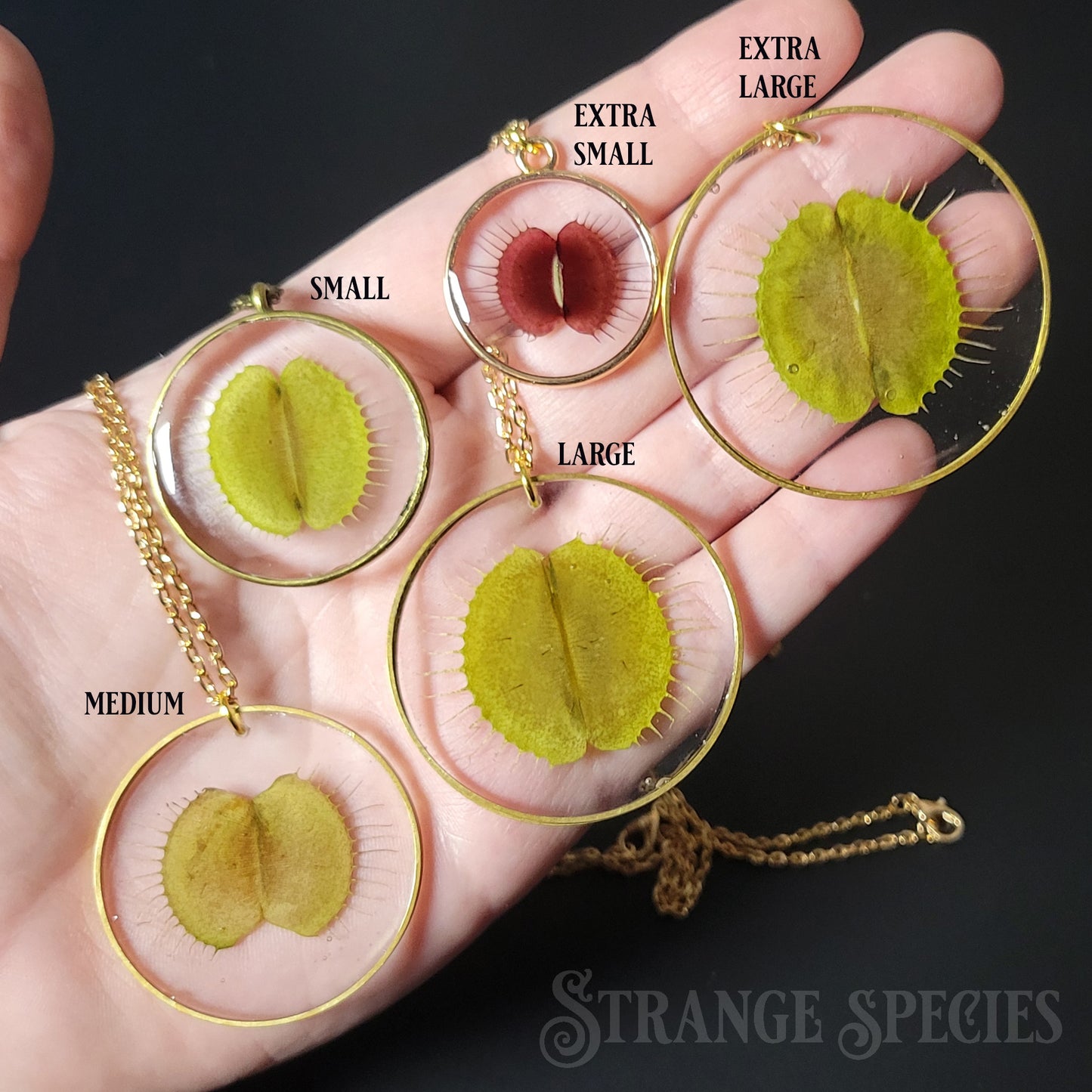Deadly Botany Preserved Venus Flytrap Necklace
Deadly Botany Preserved Venus Flytrap Necklace
Couldn't load pickup availability
Among nature's most marvelously bizarre plant species is the Venus flytrap, native to the bogs and swamps of North and South Carolina. These beautiful and strange-looking plants grow in poor soils, so they've adapted to finding nutrients in a different way: they devour insects.
These traps have been harvested from my ever-growing personal collection of fly traps, and each and every botanical specimen is unique, as is the preparation. Please note that on close examination you'll likely notice imperfections like bent or broken teeth on the trap, or bubbles in the resin. I think these give the pieces a nice antique sort of look, but be sure to check out all of the product photos for what you can expect to receive! You'll receive a randomly selected piece so I've done my utmost to provide plenty of photos of example necklaces.
Because the traps do vary so widely in their shape, color, and condition, you have some options to choose from:
Color
Traps are available in red and green. Green specimens may have a flush of red at their center, but are majority green. Red traps may have an edging of green, but are majority red. Some of the reds are very deep, dark red!
Size
Each necklace comes on a 24 inch chain with a small lobster clasp closure. You can select your own pendant size depending on available stock; sizing is measured in diameter, and these measurements are approximate:
X-Small 28 mm (1 inch)
Small 35mm (1.4 inch)
Medium 40mm (1.6 inch)
Large 45mm (1.8 inch)
X-Large 50mm (2 inch)
The size of the trap inside the pendant will vary, as I have to simply match up each individual trap with a size of bezel that will accommodate it. Some traps may be wider with very long teeth, while others may be taller with little teeth.
Measurements
Measurements
Materials
Materials
Care Instructions
Care Instructions
Dried botanicals
When plants are dried, they become very fragile and brittle. Please handle with care. Many of the display containers are not glued to their bases (to allow you to place your own little items inside or be able to clean the glass), so be sure to pick up these items by the base, not the dome. Keep the specimen out of sunlight; the UV light can cause the colors in your plants to fade. The colors in all dried botanicals will fade over time regardless, but too much light will accelerate the process.
Resin botanicals
If your plants are encased in resin, they're nicely protected from damage, but the resin itself can be vulnerable. Where possible, I use non-yellowing resins, but most resins will yellow at least a little bit with lots of sun exposure. Don't place your resin botanicals in sunlight or near other sources of UV like grow lights. (Obviously you can wear your resin-based jewelry outdoors! Just don't leave them sitting in sunlight when they're stored.) Please keep in mind that the colors of dried botanicals can fade, even when they're encased in resin, so the appearance of your piece might fade over the years.
Additional information
Additional information










